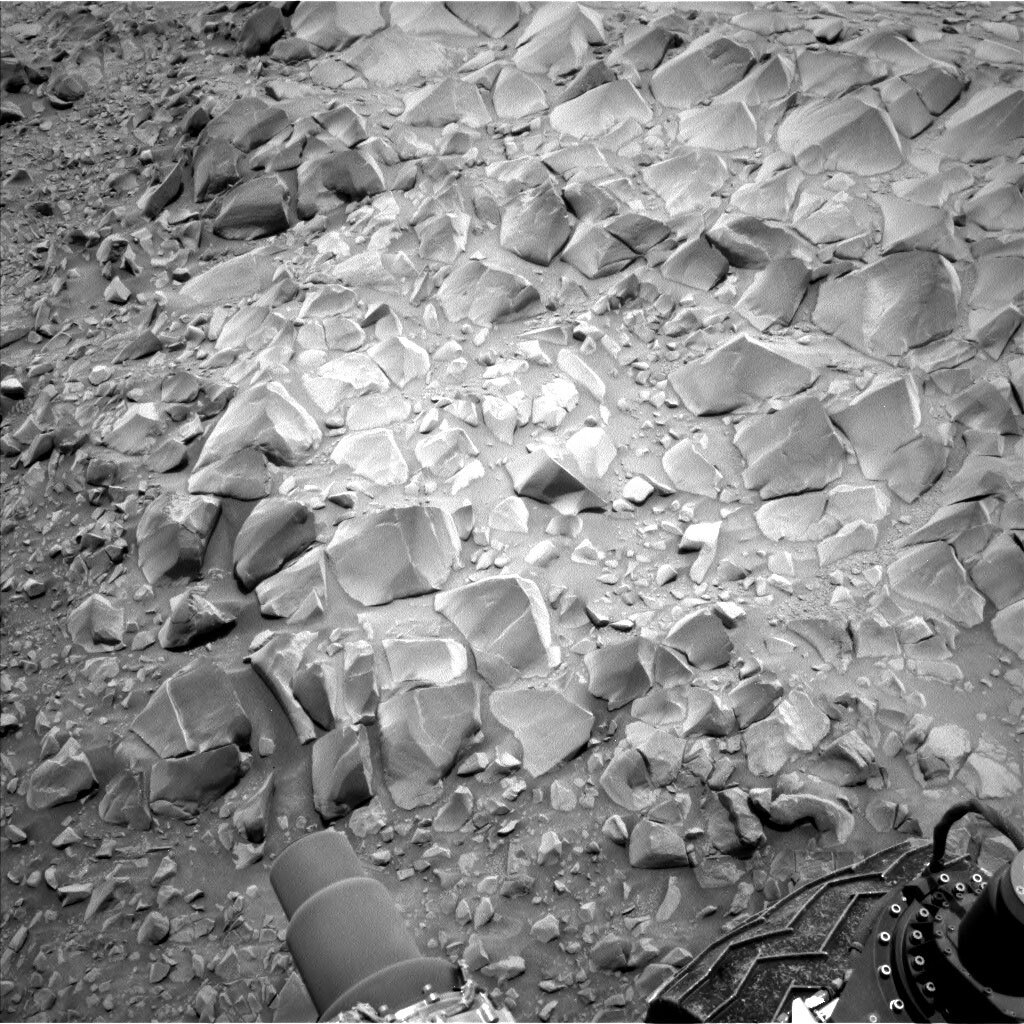2 min read

Curiosity is investigating the different surface expressions of the Greenheugh pediment, and the weekend drive put the rover right next to some “gator-back terrain” – some evenly spaced ridges with a blocky expression, as seen in the above Navcam image. Today’s one sol plan is focused on a close encounter with one of these ridges through contact science and remote sensing.
The plans starts with a ChemCam LIBS observation of “Scandal Beck” to assess the chemistry of the blocky outcrop. Then we’ll acquire 2 long-distance RMI mosaics to investigate the stratigraphy exposed in Gediz Vallis ridge. Afterwards, Mastcam will take two large mosaics to look at the sedimentary structures exposed in the “gator-back” ridge and characterize the erosion of these blocks. The rover will also take a Navcam dust devil survey now that we’ve entered the dusty season on Mars. In the afternoon, MAHLI will take a closer look at the grain size of these rocks at the target “Calder,” followed by an overnight APXS integration to learn about its chemistry. Early the next morning Mastcam will acquire a mosaic of Gediz Vallis ridge to document this feature from our good vantage point and morning lighting conditions.
Prior to arriving on the Greenheugh pediment, the team had been intrigued by the “washboard texture” preserved on its surface, as identified in orbital images. Now that we’re here it’s quite surprising to see how rugged it is, and the informal description of this “gator-back terrain” seems very fitting!
Written by Lauren Edgar, Planetary Geologist at USGS Astrogeology Science Center







